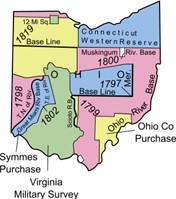Many people tend to think of regions in these United States as homogenous or collectively very defined either by border, culture, or some other parameter. However, the truth is that regional boundaries are much more fluid and crossover exists between each region abutting each other. This can be seen across the country, but is very prevalent in what is called the Lower Midwest, where pseudo-southern lifestyles and customs are quite dominant. The phenomenon of “southern” cultures residing outside of the geographical South is an interesting one that manifests itself in many ways. I can only speak to the experience of the Lower Midwest through the personal observations I have from growing up and living here.
The Lower Midwest or “Southern Midwest”, as it’s referred to sometimes, is a very distinct subregion that differs from the Midwestern states they reside in and have a culture that little resembles their northern neighbors. Geographically, if you extend the Mason-Dixon line across the states of Ohio, Indiana, Illinois, and Missouri the southern portions of these states lie below it. If you were to stop by a farm or small town in southern Ohio or Indiana and talk to locals, you may think you were a lot further south than you’d believe. Driving around the Lower Midwest, you might be surprised to see streets and roads named after southern historical figures, confederate battle flags atop homes and barns, sweet tea and southern cuisine on restaurant menus, as well as advertisements for bluegrass and country music festivals. Many natives of the Lower Midwest, myself included, have southern heritage that extends back generations to the colonial era in places such Virginia, the Carolinas, and Maryland. And many are linked to later states like Kentucky, Tennessee, and even Alabama. This is evident today in the inherited accents, slang, cuisines, county and town names, family surnames, and religion as well as political persuasions.
Historically, the Lower Midwest, or the lands that bordered the upper South, mirrored much of the culture from south of the Ohio River due to migration from Maryland, Virginia, and the Carolinas as well as general proximity to Kentucky, Tennessee, and Virginia (before the creation of West Virginia). However, there were still large amounts of migration from states like New Jersey, Pennsylvania, and Massachusetts that counter-balanced these early migration patterns from the South. Particularly, in my home state of Ohio, this is especially true. Originally, Ohio’s lands were broken up and under the jurisdiction of other colonies and states that had land ceded to them for the purpose of settlement in the Northwest Territory. Two of the largest portions were the Virginia Military District (based on the Virginia military surveys in the 1780s) in the southwest and south-central portion and Connecticut’s Western Reserve (also known as the Firelands) in the northeast and north-central part of the then territory. There were other ceded lands to incorporated companies and individuals, but the two mentioned encompassed large amounts of what is now Ohio and others were not as inhabited.
The Virginia Military District was land ceded by the state of Virginia to be settled by Virginia’s Revolutionary War veterans as payment for their service. The surrounding areas were settled by fellow Virginians, Pennsylvanians moving further west, and Marylanders looking for expanded opportunity. Likewise, Connecticut’s Western Reserve provided land to New England and Connecticut’s colonial settlers after the Revolutionary War. As time went on, other settlers from Massachusetts and New York migrated here. Differences between the two subregions were immediate and still persist today. The Western Reserve became one of the hotbeds for abolitionism (John Brown’s family moved here when he was a child and much of his upbringing and adult life was spent here) and nurtured the inherited Puritan faith while the Virginia Military District was more sympathetic to states’ rights and federalism because of their ancestral ties to the South and their proximity to southern trade. Their faith also resembled their southern neighbors with large amounts of Baptists, Episcopalians, and Presbyterians living in that section. Even the architecture of buildings and farms differ greatly between these two subregions within the state. In the north, buildings, farmhouses, and barns resemble those found in New England and places like upstate New York. However, to the south, the architecture resembles more Federal and Georgian styles that originated in Virginia and the coastal South. It is this historic dichotomy that explains why, historically, Ohio was a critical swing state in national elections and served as the country’s bellwether for generations. It also explains how you get diametrically different characters like William Tecumseh Sherman and Clement Vallandigham; Ulysses S. Grant and Alexander Long from the same state. Towards the late 19th century and into the 20th century, the Upper Midwest acquired large amounts of non-Western European immigrants from nations like Italy, Greece, Poland, Scandinavia and Norway, as well as Lithuania and Russia. These people did not share the same American traditions that earlier British settlers had. The Lower Midwest remained more homogenous, acquiring immigrants primarily from England, Scotland, Ireland, and Germany.
It was not until the Great Depression in the 1930’s and, more specifically, the post-WWII era that the lower portions of the Midwest solidified and expanded the southern qualities and characteristics that were already present. This was a result of the mass migration out of southern Appalachia in the post-war years as families looked for greater economic opportunity and left the coal mines and subsistence farms they had grown up on. People from Eastern and Central Kentucky, West Virginia, Eastern Tennessee, and western North Carolina migrated to rural and urban areas of the southern regions of Ohio, Indiana, Illinois, and Missouri. Cities like Cincinnati and Dayton, OH; Evanston, IN; Cairo, IL; and St. Louis, MO took on more southern characteristics in the latter part of the twentieth century that are largely visible today. Some have referred to this as the “Relocated Redneck” phenomenon that occurred along the “Hillbilly Highway”.
While Appalachian culture is certainly southern, it is one of many southern cultures that exist in the American South and is itself, a distinct subculture that is different from other southern regions such as the Virginia Tidewater, the South Carolina Lowcountry, the Cotton Belt, and Texas. So, to say that the Lower Midwest is “southern”, is not entirely accurate, and too generic. The culture that exists in the southern parts of the Midwest is mostly a displaced Appalachian culture that has naturally manifested itself through decades of cultural clustering by relocated southerners. These individuals formed a social solidarity that has maintained influence over their descendants and the locales in which they live. They retained much of the social culture they came from and shared an attitude of solidarity based on their common heritage, resentment of northern industrial culture, and a longing to, one day, return home. Many would remain in the Lower Midwest for generations, staying put for employment and family stability. Their cultural solidarity was so cohesive that within a quarter of a century, they altered the cultural and political landscape of the Lower Midwest in their own image, reinforcing southern elements that predated their migration while adding distinctly Appalachian ones. It has been noted that much of the Lower Midwest now appears more “southern” than places like Raleigh and Atlanta, and resembles towns like Chattanooga, Knoxville, and Roanoke.
This phenomenon is primarily unique to the Lower Midwest and heavily concentrated there. However, there are pockets of displaced southern culture in various places across the country such as Detroit, MI; southern California; and various scatterings across the western plains and mountains. The migration of southerners out of the South to other areas of the country as well as the growing resentment between rural and urban Americans is leading to a slow, but steady “southernization” of swaths of our country.
So, these United States are a nuanced place with lots of cultural crossover around regional boundaries. The Mason-Dixon or Ohio River is not as hard of a border as it may have once been, and perhaps, it was never a defined border at all. The Lower Midwest is a unique example of the spread of southern culture, in all varieties, across the country. And it is a good sign in the long term. The South is the most American part of America and the “southernization” of other parts of the U.S. plants seeds of hope in very fertile ground for a rediscovering of ourselves and, as M.E. Bradford put it, “remembering who we are”.







Glad to see this post. I am a 21st century ‘copperhead’ (and I share the birthdate of Vallandingham) who also lives in southwestern Ohio and have rural property in the old Virginia military district. While I am of German/Swiss origin from about 150 years ago, I have more in common with southern culture and attitudes than those of New England yankees!
I really appreciated reading this article. I grew up in central Illinois, mostly around my mother’s family, with Pennsylvania Scotch-Irish and Midwest-German roots. As a young boy, I considered my father’s family in southern Illinois somewhat exotic, as they sounded (and sometimes acted) as if they were from a different planet. As I’ve gotten older (now middle aged) I’ve grown to greatly love and appreciate the Southern roots of my father’s family, and am the proud son of Confederate veterans. They came to Southern Illinois a little before and after the War of Northern Aggression, from Kentucky and Tennessee. Prior to the that, the roots extend back to Virginia and the Carolinas.
Culturally, “Little Egypt,” as deep southern Illinois is often called, is indistinguishable in many ways from western and central Kentucky and Tennessee.
This is an encouraging article with an excellent education, Cole. It reinforces my observations in the Midwest as a native-born Southerner, ancestral Midwesterner (Abbeville readers will be relieved my parents eagerly assimilated from the get-go). In American terms, the distinctness of Southern culture shines through in those lower regions.
Bradford’s quote will be vital to any restoration of Western civilization’s political and cultural health. Thank you for reminding us of it.
May God bless the South and you, my friend!